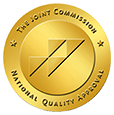
Here’s a staggering statistic: 4.4 percent of the U.S. population misuses opioids, including painkillers and heroin.
That statistic was provided as part of an update on the opioid crisis recently released by the U.S. Department of Health and Human Services. While there has been some progress made, the report indicates that the epidemic is still raging on, especially on the East Coast and in the Midwest.
The Start of the Opioid Crisis in America
In the late 1990s, drug pharmaceutical companies took steps to reassure the medical community that their prescription painkillers were safe and unlikely to lead to addiction. Healthcare providers listened and began to prescribe drugs such as OxyContin and Vicodin at greater rates.
What happened next proved the misunderstanding the pharmaceutical companies had about their medications. Some argue this epidemic proved how they intentionally mislead the America people for profit, a matter being battled out in the judicial system right now.
Between 21 and 29 percent of people who are prescribed opioids for pain misuse them, and between 8 and 10 percent go on to develop an opioid use disorder.
Opioid overdoses have increased 30 percent from July 2016 through September 2017. In the Midwest, opioid overdoses increased 70 percent during that same time period. Meanwhile, opioid overdoses in large cities in 16 states also increased by 54 percent.
Signs of Progress in the Opioid Epidemic
The opioid epidemic began with prescription opioids and that, too, is where it must end. Around 70 million prescriptions for painkillers were written in 2010. In 2017, that number was down to about 50 million.
At the same time, the report states youth prescription opioid misuse has declined over the last decade and that heroin use is stable among youth.
The challenge now is two-fold: To use education to prevent more people from becoming addicted and to get help for those who are already addicted.
Hope and Healing at The Raleigh House
At The Raleigh House, we take a whole-person approach to recovery. That means we don’t just get the heroin or painkillers out of your system. The real work is helping you recover psychologically, mentally, spiritually and socially. We also evaluate and treat residents for any co-occurring conditions that may exist, such as depression or post-traumatic stress disorder.
Fill out our form or contact us today to learn more about the painkiller addiction treatment program and the heroin addiction treatment program at The Raleigh House.




